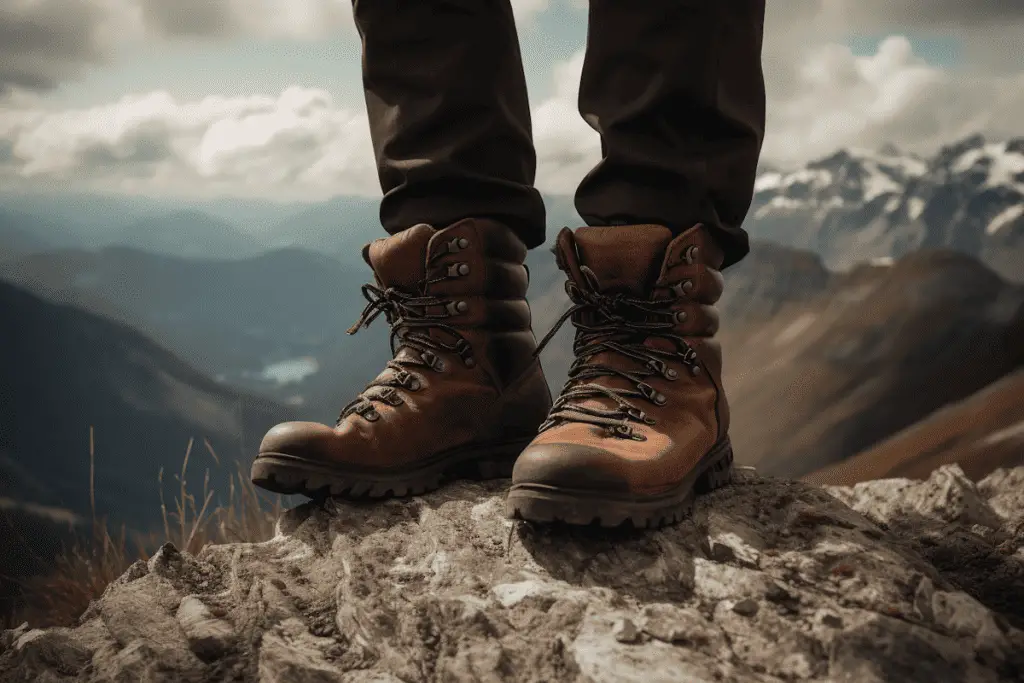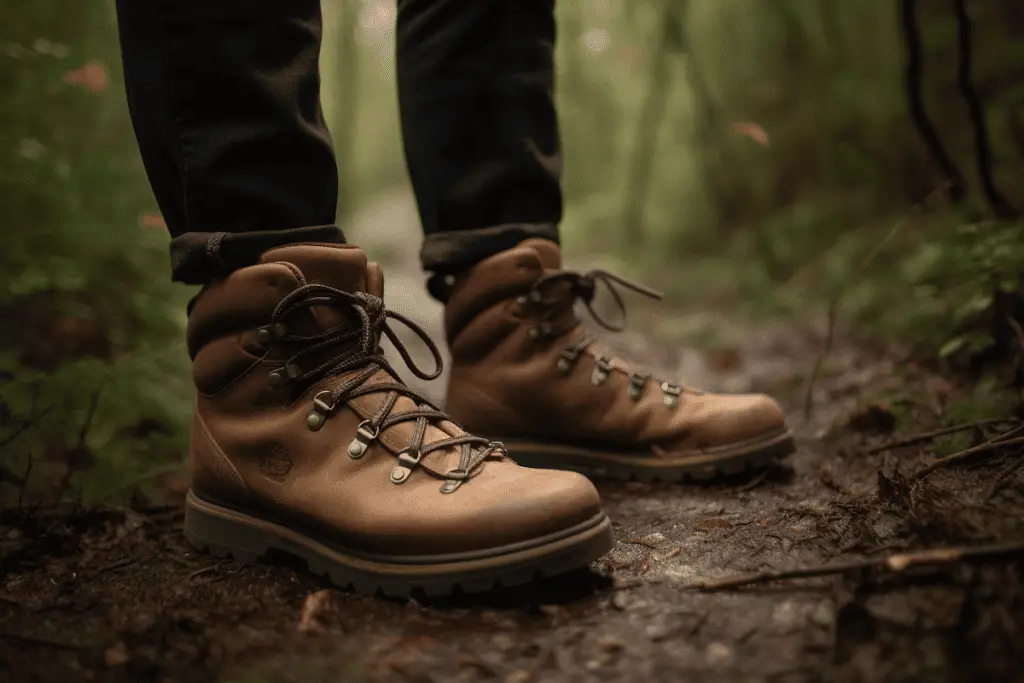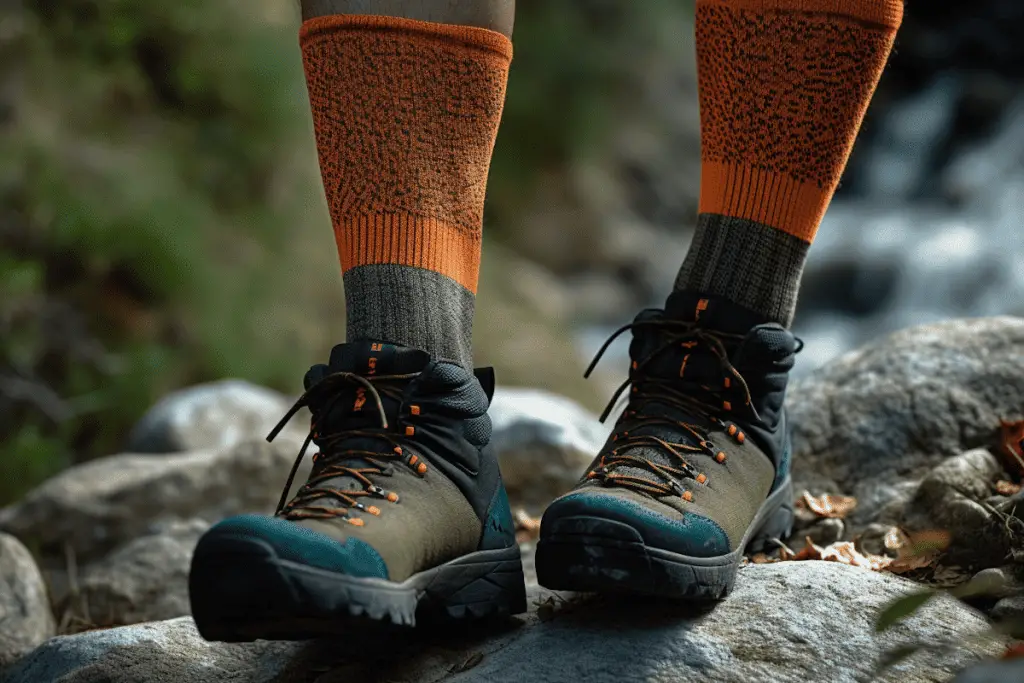Hiking can be tough on a person’s joints, especially their knees and ankles. But, do you need ankle support for hiking?
Ankle support can be helpful for those with weak ankles or who plan on hiking on uneven terrain. However, some hikers prefer more flexible shoes for better mobility. It’s important to choose footwear that is comfortable and provides enough support for your specific needs.

Understanding the Importance of Ankle Support
Ankle support: it might not be the first thing you think about when you’re planning your next hiking adventure. But trust me, it’s worth considering. The truth is, your ankles do a lot of heavy lifting when you hike. They support your body weight, help keep you stable on uneven terrain, and absorb the shock of each step you take. That’s a big job for such a small part of your body!
But what does ‘ankle support’ really mean when it comes to hiking? Well, it’s all about reducing the risk of injury and maintaining comfort while you’re out on the trails. A good ankle support system, which might be a combination of sturdy boots, compression socks, or even an ankle brace, helps protect the ligaments and tendons in your ankles. This is particularly important if you’re hiking on rocky or hilly terrain, where the risk of twisting or spraining your ankle can be quite high.
How Hiking Influences Your Ankles
Let’s delve a little into how hiking affects your ankles. Picture yourself out on a hiking trail, maybe it’s sunny, maybe there’s a cool breeze, and the trail ahead is winding up a picturesque hill. Now, what’s happening with your ankles at this moment? A lot more than you might realize!
When you hike, especially over uneven ground, your ankles are constantly adjusting to the terrain. They’re rotating, flexing, and extending to keep you balanced and upright. Unlike walking on a flat, paved surface (like a sidewalk or a road), hiking involves a lot of lateral and diagonal movement. Every step on an uneven surface, every quick pivot to avoid a loose rock, puts strain on your ankles.
The strain on your ankles increases even more when you’re going uphill or downhill. Going uphill, you need to push off harder with your feet, and guess who’s doing a lot of that work? Yup, your ankles. On the other hand, when you’re going downhill, your ankles work to stabilize you and prevent you from going too fast.
This constant work can lead to fatigue, and when muscles are tired, they’re more prone to injuries. That’s why ankle support is so crucial when hiking. The right support can help distribute the strain more evenly, reducing the risk of sprains and strains.
Types of Ankle Supports for Hiking
So, let’s get into the different types of ankle support you can use for hiking. Don’t worry, you’ve got a few options, and finding the right one for you can make all the difference on your hiking experience.
First up, we have high-cut hiking boots. These are the classic, sturdy hiking boots that probably come to mind when you think of hiking footwear. They cover the ankle completely and offer excellent support. This makes them perfect for longer hikes, rough terrains, and if you’re carrying a heavy backpack. However, they can also be a bit heavier and require a longer break-in period.
Next, we’ve got mid-cut boots. These boots extend slightly above the ankle and offer a good balance between support and flexibility. They’re great for day hikes and lighter backpacking trips. If you find high-cut boots too restrictive, these could be a good compromise.

Then there are ankle braces or supports. These are typically made from elastic or neoprene and can be worn under your hiking boots. They’re particularly useful if you have weak ankles or if you’re recovering from an injury. However, they’re not for everyone, and you should definitely consult with a healthcare professional before deciding to use them.
Lastly, let’s not forget about hiking socks. Yes, socks! Compression socks, in particular, can help increase blood flow and provide additional support.
All these options have their pros and cons, and the best choice for you will depend on your specific needs, the terrain you’ll be hiking, and personal comfort. Remember, there’s no one-size-fits-all solution, so take the time to figure out what works best for your ankles!
How to Determine If You Need Ankle Support
Now, you might be asking yourself, “Do I personally need ankle support for hiking?” Well, let’s figure that out together.
First off, consider your personal history with ankle injuries. If you’ve sprained or twisted your ankle before, especially more than once, additional ankle support is a pretty good idea. Your ankles might be weaker or more prone to re-injury, and giving them a bit of extra support can go a long way in preventing that.
Next, think about what kind of terrain you’re hiking on. If you’re walking on flat, well-maintained trails, your need for ankle support might not be as high. But, if you’re trekking through rocky, uneven, or hilly terrains, where your foot might be landing at odd angles, that’s where the extra ankle support really comes in handy.

Your physical condition and strength also play a part. If you have strong, well-conditioned ankles, they can handle the stress of hiking better. On the other hand, if you haven’t been as active, or if you know your ankle strength could use some work, consider looking into some ankle support options.
Lastly, the weight you’ll be carrying affects the need for support. The heavier your backpack, the harder your ankles work to stabilize you, increasing the potential need for ankle support.
So, in short, whether you need ankle support or not is a mix of your past injuries, your hiking terrain, your physical condition, and the weight you’ll be carrying. If in doubt, it doesn’t hurt to err on the side of caution and give your ankles a bit of extra care. After all, a well-supported hike is a happy hike!
The Role of Proper Footwear in Ankle Support
When we talk about ankle support for hiking, footwear definitely comes front and center. The right shoes or boots can make a huge difference in your hiking experience. So let’s break down how proper footwear plays a crucial role in providing ankle support.
Hiking boots and shoes are specially designed to handle the rough and unpredictable conditions of the trail. They have robust soles for grip, sturdy materials for durability, and most importantly, they’re constructed to support your foot and ankle.
High-cut hiking boots are particularly known for their excellent ankle support. They cover the entire ankle, preventing it from rolling or twisting, which are common causes of sprains. These boots also offer extra padding, protecting your ankles from knocks against rocks or other hard objects.

But even low-cut hiking shoes, which might seem like they offer less support, have their own benefits. They’re lighter and offer more flexibility, allowing your ankles to move more freely and naturally. This can actually strengthen your ankles over time.
Remember, good support doesn’t just mean preventing injury; it also means comfort. Look for hiking footwear with good arch support, a snug fit, and adequate cushioning. These factors all contribute to reducing strain on your ankles, making your hike more enjoyable.
So before you hit the trails, invest some time in finding the right footwear. Not only will it help keep your ankles happy and healthy, but it’ll also make your whole hiking experience more enjoyable. Because, let’s face it, no one wants to be thinking about sore feet when they could be enjoying the stunning views!
A Closer Look at Hiking Socks and Their Effect on Ankle Support
Now, hiking socks might not be the first thing that comes to mind when you think about ankle support, but don’t underestimate them! They play a key role in your overall comfort and can also add a layer of protection for your ankles.
Hiking socks come in various materials, including merino wool, synthetic blends, and sometimes even silk. What’s important is to choose a pair that wicks away moisture (keeping your feet dry is crucial to avoid blisters) and offers a snug, but comfortable fit.

In terms of ankle support, some hiking socks offer a bit of compression. Compression socks can improve blood flow, reduce swelling, and generally provide extra support to your feet and ankles. They can be particularly helpful if you’re prone to swollen ankles after long periods of walking.
But even regular hiking socks can offer some level of protection. A well-cushioned sock can reduce friction and pressure, helping to avoid blisters and other discomforts. The extra padding can also act as a slight buffer between your ankle and the boot, protecting against knocks and scrapes.
Finally, consider the height of your hiking socks. If you’re wearing high-cut or mid-cut boots, make sure your socks are tall enough to prevent any rubbing between the boot and your skin.
Common Ankle Injuries from Hiking and How to Prevent Them
When we’re out hiking, enjoying the beautiful scenery and fresh air, the last thing we want to think about is getting injured. But the truth is, ankle injuries are quite common among hikers. However, knowing the common types of injuries and how to prevent them can make a world of difference.
Sprained ankles top the list. This happens when the ligaments that support your ankle stretch or tear, usually due to a twist or roll of the foot. They’re particularly common when hiking on uneven or rocky terrain. To prevent sprains, it’s crucial to wear sturdy shoes with good ankle support and to be mindful of where you step.
Strains, which are injuries to muscles or tendons, are also common. In the case of ankles, strains often occur in the Achilles tendon. Again, wearing appropriate footwear and using hiking poles can help prevent these injuries. And don’t forget to warm up before your hike and stretch afterwards!
Stress fractures are another possible injury. These tiny cracks in the bone can occur over time due to repetitive force, often from ongoing hiking or running. Ensuring your hiking boots provide good shock absorption and mixing up your activities to include low-impact exercises can help prevent stress fractures.
The important thing to remember is that while these injuries are common, they’re also preventable. Invest in good footwear, be mindful of your surroundings, take breaks when you need to, and listen to your body. Your ankles are stronger than you might think, but they also deserve to be taken care of. Keep them safe and they’ll carry you through many hiking adventures!
The Value of Ankle Exercises for Strengthening and Flexibility
When we talk about hiking and ankle support, it’s easy to focus solely on external factors like boots or braces. But let’s not forget about something equally, if not more important: strengthening and flexibility exercises for your ankles.
Strengthening your ankles can significantly improve their stability and resilience. Try exercises such as heel raises, which involve standing on your toes and then slowly lowering your heels back to the ground. Or try writing out the alphabet in the air with your toes—this sounds easy but it’s actually a great workout for your ankle muscles!

Balance exercises, like standing on one foot or using a balance board, can also help enhance your ankle strength. These exercises train your ankles to stabilize you, which can be very beneficial when you’re navigating uneven terrains.
Now, on to flexibility. A flexible ankle can better adapt to the varied and unpredictable surfaces you’ll encounter when hiking. To improve flexibility, try doing some ankle circles or calf stretches. Remember, it’s always easier and safer to stretch after a brief warm-up when your muscles are more pliable.
While these exercises are simple and can be done at home, they can make a big difference in preventing ankle injuries. So, as part of your hiking preparation, consider adding a few ankle exercises to your routine. Just a few minutes a day could significantly improve your hiking experience and safeguard your ankles from injury.
Customizing Ankle Support: Personal Needs and Preferences
After exploring the many aspects of ankle support for hiking, it’s clear that this topic goes beyond just selecting the right pair of boots. The need for ankle support can depend on several factors, including your personal history of ankle injuries, the type of terrain you’re hiking on, your physical condition, and the weight you’ll be carrying.
The journey of ensuring good ankle support for your hikes doesn’t stop at the purchase of the right hiking boots. It’s a continuous process of understanding your body, keeping it conditioned through strength and flexibility exercises, and adapting to changing hiking conditions and experiences.
Ankle supports, such as braces and hiking socks, provide additional protection and support. And personal experiences from fellow hikers are a treasure trove of real-life knowledge and lessons. Learning from them can enhance your own hiking experiences.
Lastly, don’t forget to consult with a healthcare professional if you have any concerns about your ankles or if you’re planning to start using a new type of ankle support. It’s always better to be safe and ensure you’re making the right decisions for your health.
Different Terrains: Flat vs Mountainous Hikes
The type of terrain you’ll be hiking on plays a significant role in determining the kind of ankle support you’ll need. The challenge varies greatly between flat, even paths and steep, uneven mountainous trails, which is why it’s important to adjust your gear accordingly.
When you’re hiking on flat or gentle terrain, the risk of ankle injury is generally lower. The surfaces are more predictable, and your foot is less likely to land at awkward angles that might strain your ankle. For these types of hikes, low-cut hiking shoes often suffice. They are lightweight and flexible, which makes them comfortable for long distances. While they offer less ankle support than high-cut boots, the reduced risk on these trails makes this a fair trade-off for the added comfort and lighter weight.

On the other hand, mountainous hikes are a whole different ballgame. You’ll be dealing with rocky paths, steep inclines, and perhaps even some scrambling. For such hikes, a boot with high ankle support is typically recommended. High-cut boots offer more stability and can prevent your ankle from rolling if you step incorrectly. They’re also sturdier, providing better protection against sharp rocks or loose stones.
Additionally, remember to consider the weight of your pack. If you’re carrying a heavy load, a high-ankle boot will provide better support, even on flatter terrain.
In conclusion, the type of terrain you’re hiking should influence your choice of footwear and the level of ankle support you need. By matching your gear to the environment, you’re not only optimizing for comfort but also for safety.
Conclusion: Is Ankle Support Non-negotiable for Hiking?
The question of whether ankle support is non-negotiable for hiking is both simple and complex. The simple answer is yes; ankle support is crucial for hiking. But the complexity comes when you start considering the variables. What kind of hikes are you embarking on? What’s your level of experience? Do you have a history of ankle injuries? What’s the weight of your backpack?
For seasoned hikers with strong, flexible ankles, who mostly do light trail walking, a low-cut, flexible shoe might be sufficient. But for those who are prone to ankle injuries, who hike on challenging terrains, or carry heavy loads, high-cut boots with robust ankle support are essential.
But let’s remember, ankle support isn’t just about footwear. It’s also about strength and flexibility exercises, possibly using additional ankle supports like braces, and selecting proper hiking socks. It’s a holistic approach that requires you to understand and respect your own body’s strengths and limitations.
Therefore, while ankle support is indeed non-negotiable for hiking, how you achieve that support can vary. It’s a personal journey, as much about knowing your body as it is about knowing the trail. As always, it’s better to err on the side of caution and prioritize safety and comfort. After all, the goal is to enjoy the hike and the incredible outdoor experiences it brings. So, take care of your ankles, and they’ll take care of you.
